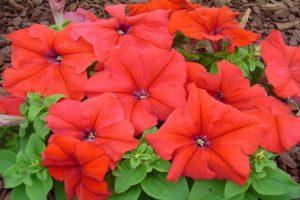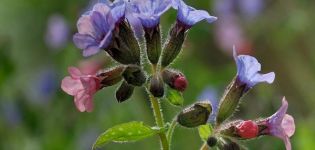Description of the types of indoor primrose, growing and care at home
Primrose belongs to primroses and blooms almost immediately after the snow melts in early spring. But there is also a room primrose. When creating favorable conditions for growing, the plant will delight with colorful flowers for a very long time.
The main types and varieties of indoor primroses
There are several varieties of primrose that are suitable for growing at home. All varieties differ in some characteristics.
Primrose soft
The soft-leaved primrose is a short annual plant. The height of the bush is about 50-55 cm. The leaves are oval, dense, with a rich green hue. The leaves are serrated along the edges. Peduncles are located higher than the leaves.
The inflorescences are collected from a large number of small flowers and look like a ball. The shade of the petals is different: pink, purple, white or red. The inflorescences are fragrant, bloom in mid-winter. Flowering is long, ranging from 3 to 6 months.
Reverse conical primrose (obkonika)
This variety is especially popular among flower growers who grow flowers at home. The foliage is elongated, emerald green. Peduncles are not much higher in length than leaves.
Umbellate inflorescences, collected from small flowers. The shade of the petals is varied: red, white, lilac, purple, pink. The diameter of the inflorescence is from 7 to 13 cm. The flowering period is short, lasts up to 2 months. But if you take proper care of the flower, it can be extended.
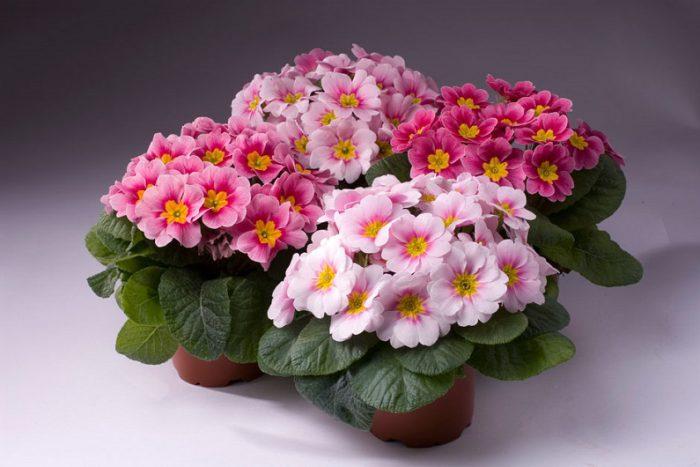
Primula stemless
Another type of indoor primrose is stemless. The variety is miniature. The foliage has a rich green hue, the shape of the leaves is elongated, lanceolate. Unlike other varieties, the inflorescences grow singly on peduncles, and not collected in one large umbrella. Peduncles are tall, up to 10 cm high. Inflorescences are of different shades. The flowering period begins in April and lasts up to 4 months.
Home Care Tips for Primrose
Growing a flower culture at home is not the most difficult task. But you shouldn't ignore caring for the plant either. With properly organized care, the plant will bloom for more than one month.

The location of the primrose in the apartment
When growing primroses in flower pots, you need to provide favorable conditions for growth. It is recommended to place plant pots in sunny windows.The culture prefers soft, diffused light. But it is undesirable to place pots on the south windows, especially in summer. The sun's rays in summer are very aggressive and can destroy the plant. Another condition is the absence of drafts on the windows where the indoor primrose grows.
Temperature and illumination
The plant does not like it when the room is too hot. The optimum temperature is from +12 to + 15 degrees. If the house has an insulated loggia, then when it gets warm, you should take the pots there.

The culture belongs to light-loving plants. It is best if the primrose is in the sun for at least 12 hours a day. In winter, when there is almost no sun, the flower does not need additional lighting. During this period, he is in a dormant stage.
Watering and moisture
Like all primroses, indoor primrose loves water and moist soil. Watering should be abundant. Irrigate the soil as it dries. During irrigation, the main thing is not to flood the soil. The flower does not like stagnant water. Flowers should be watered in the evening, while it is important to ensure that no water gets on the foliage. For irrigation use water at room temperature or slightly warmed up. The main thing is that it is warm.
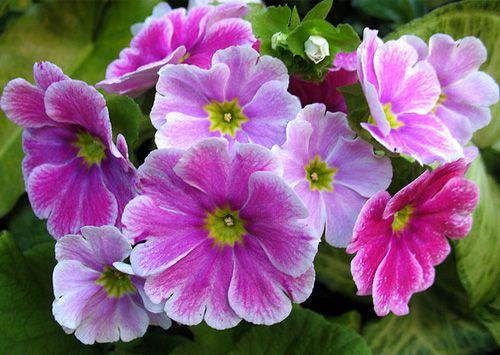
Fertilizers and feeding
Most of all, the plant needs iron, therefore, as soon as the flower gives the first peduncles, iron-containing dressings are introduced into the soil. The primrose is then fed for the entire flowering period. You can also use fertilizer for indoor flowers. The main thing is not to overfeed the flower.
Transfer
The flower should not be kept in one pot for a long time. As it grows, the plants are transplanted into larger pots. Transplanting is best done after the plant has bloomed.
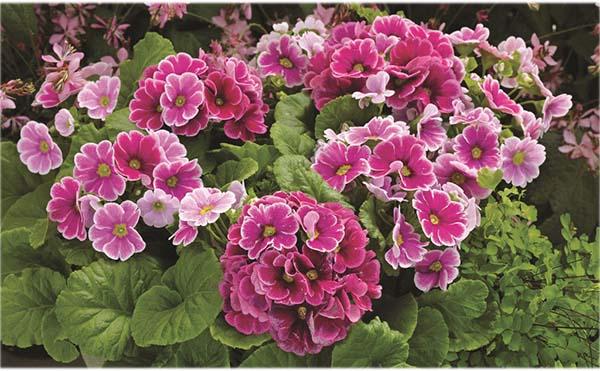
Earth mix
It is recommended to grow primrose in fertile, loose soil. Plant soil mixture:
- peat soil;
- leafy soil;
- sand.
Everyone is taken in the same parts. Mix everything thoroughly to get a homogeneous mixture. And for the cultivation of reverse conical primrose, sod soil is also added to the soil mixture.
Before planting the flower, a drainage layer (1-3 cm) is poured on the bottom of the pot, and only then the soil mixture is poured and the planting begins.
Protection against diseases and pests
Among the pests, you can most often find:
- spider mite;
- thrips;
- aphids.
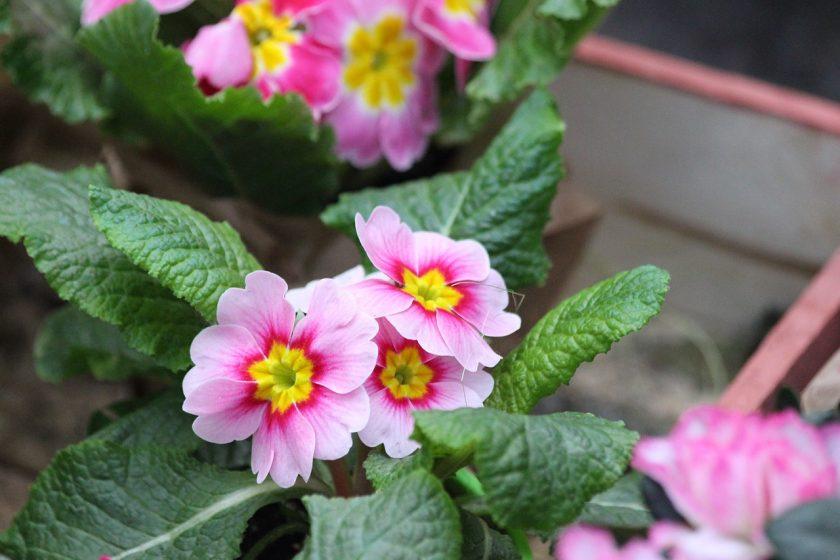
Insects on the flower appear due to too high air temperature in the house and humidity. A solution of laundry soap will help get rid of insects.
Spraying with "Karbofos" and "Decis" preparations will also be effective.
When growing primrose, you can face the following diseases of flower crops:
- yellow spots;
- chlorosis;
- gray rot.
The appearance of yellow spots on foliage is associated with a deficiency (or excess) of nutrients in the soil. Organization of top dressing and proper watering will help to get rid of yellow spots. You need to water the flowers with warm water and regularly feed them. Or stop feeding the plant for a while, if yellowing is associated with an excess of minerals in the ground.

Chlorosis occurs due to increased acidity in the soil. Primrose does not like acidic soil. You can get rid of it after the acidity level is low or neutral. In addition, irrigation with iron sulfate is useful. Gray rot, like other fungal diseases, can be eliminated by treating the bushes with fungicides. During processing, you need to ensure that most of the fungicides fall on the foliage.
How to propagate
There are three ways to breed primrose. This is the division of the bush, the seed method and cuttings.
Dividing the bush
The division of the bush is carried out after the flower has bloomed. The primrose is placed in the shade so that it begins to grow. The main thing is not to forget about watering.After a few weeks, the plant is removed from the pot. Carefully so as not to damage the roots, and divide the bush. During the separation, you need to pay attention that on each part there is a sleeping bud, from which a flower will subsequently grow. If there are too long roots, they are cut off and dipped in a weak solution of potassium permanganate. Then they are transplanted into new pots.
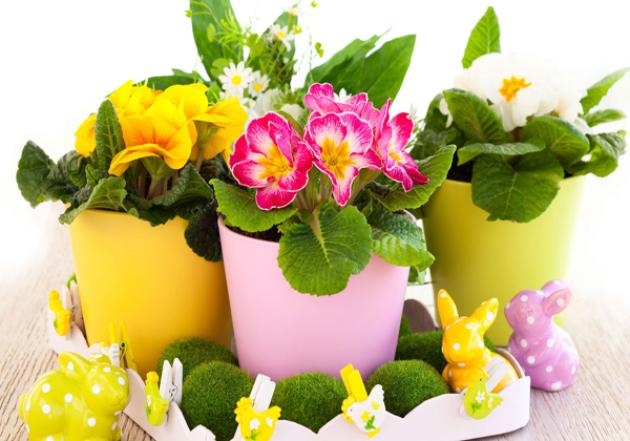
Seeds
The seed breeding method for primrose is very simple.
Seed sowing process:
- the material is etched before planting in a weak solution of potassium permanganate;
- drainage is poured into the container at the bottom, and then the soil;
- planting material is scattered over the surface of the earth;
- it is not necessary to cover it with earth from above.
The sown seeds are watered abundantly with warm water. Then the containers with seeds are covered with cling film so that the planting material germinates faster. The film is regularly removed so that the soil "breathes" and does not become moldy. Also, the soil is watered with warm water. When shoots appear, they need to be allowed to grow a little, and only then transplanted into separate pots.
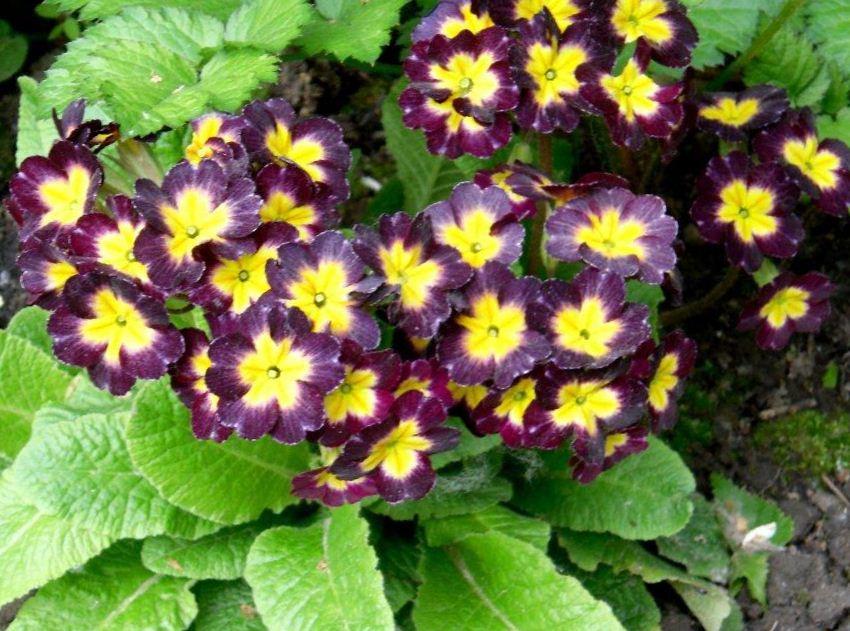
By cuttings
The propagation method by cuttings is suitable if the bush is too young. To do this, cut off a healthy leaf and put it in water. After a few weeks, the cutting will take root. When the roots grow up, it is planted in the ground.
Forcing primrose
Forcing primrose will speed up the beginning of the flowering period of the plant. The process is carried out with the expectation that it should bloom in the house by the beginning of spring.
Flower forcing process:
- To do this, two-year-old bushes are divided into several parts and planted in spacious pots.
- A prerequisite for distillation is to keep containers with plants in a cool place. The temperature in the room with the pots should be between +5 and +8 degrees.
- At the end of winter, containers with flowers are brought into the heat. The temperature in the room should be between +14 and +18 degrees.
- It is important not to forget to water the bushes.
The active growth of the flower begins in a few days. By April, the primrose will bloom in lush color. To extend the flowering period, you need to remove the crop pots in a cool room. Early spring is rarely characterized by hot weather, and the presence of a plant in a warm room leads to the fact that the flower quickly fades, since such conditions are unnatural for it.

